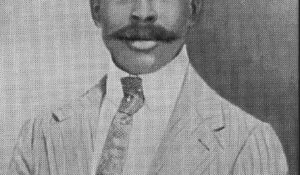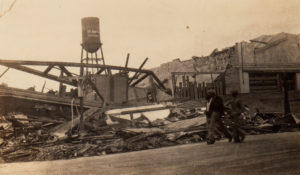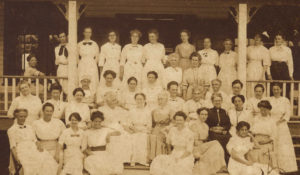The first public school established in Palm Beach County was constructed in the town of Linton in 1894 by African American settlers, who petitioned the Dade County Schools Superintendent (now Palm Beach). The one-room, thatched-hut “Dade County School #4, Colored,” was located on Blackmer Street, currently NW 5th Avenue in the West Settlers Historic District.
The school closed in 1907 due to lack of attendance. African American children worked in farm fields and at hotels and were only entitled to six months of education annually. Additional schools were built, and with the vision and determination of Clarence C. Walker and Solomon D. Spady, many generations of African American students were given the opportunity to excel in a segregated South Florida.

In 1896, a one-room schoolhouse was established by white settlers for children of European descent on the corner of what is now Swinton and Atlantic Avenue. It was built with a donation of $50 from early pioneer William Linton and a School Board grant of $250 for materials. It was a single story, one frame building and had a front porch and a small bell tower. There were 33 white children in attendance in June of 1896. The school also served as town hall, recreational hall and non-denominational church.
In 1913, Delray Elementary School was constructed (now the Cornell Museum). In 1925 a new separate building for the Delray High School was constructed (now the Crest Theatre). A gymnasium (now the Field House) was also built in 1925.
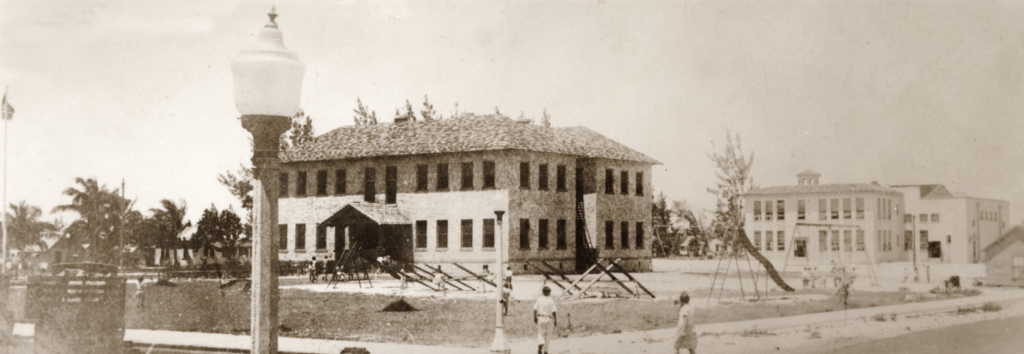
Delray High School closed in 1950, when Seacrest High School opened. The elementary school graduated its final class on June 7, 1988. For nearly 75 years the complex was a center of culture and education, hosting church services, community meetings and band performances. But now, the historicbuildings were in severe decline and many thought to tear them down.
When it was announced in 1985 that the Palm Beach County School Board intended to close deteriorating school sites county wide, Mayor Doak Campbell requested that the Delray Beach Historical Society set up a Task Force to consider a long-term use for the historic property. “Old School Square” Foundation was formed to provide direction to the City Council and develop a program that preserved the three historic buildings. Chairman Frances Bourque expanded the group of courageous volunteers in 1987 and pursued a feasibility study for the restoration of the buildings and transition to an arts and cultural center.
The City of Delray Beach purchased the property in 1987 and new era of revitalization was born.


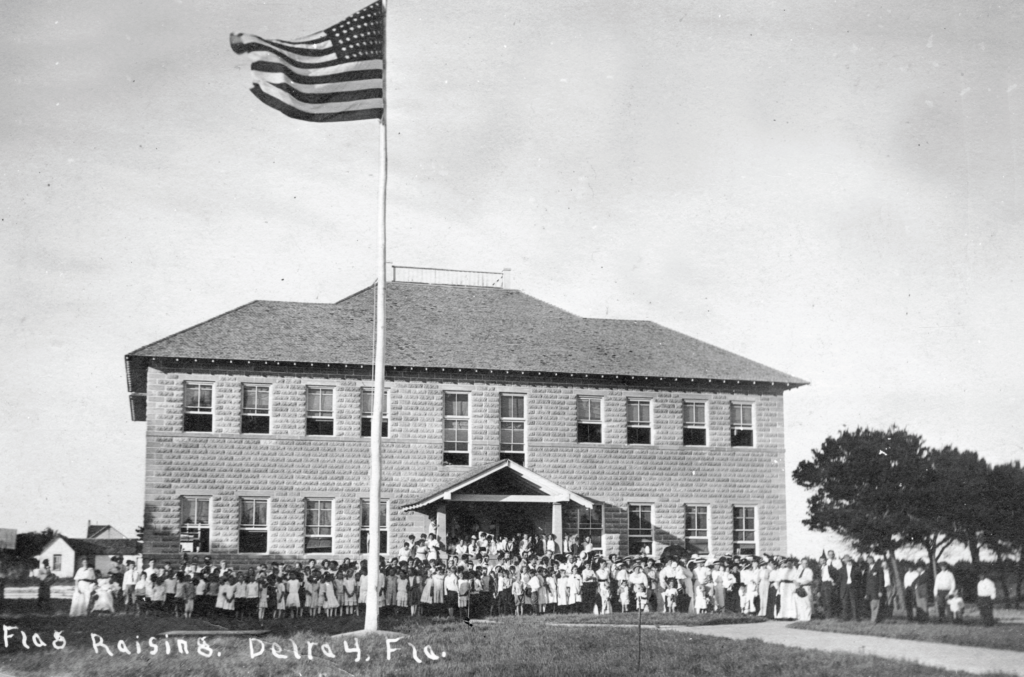
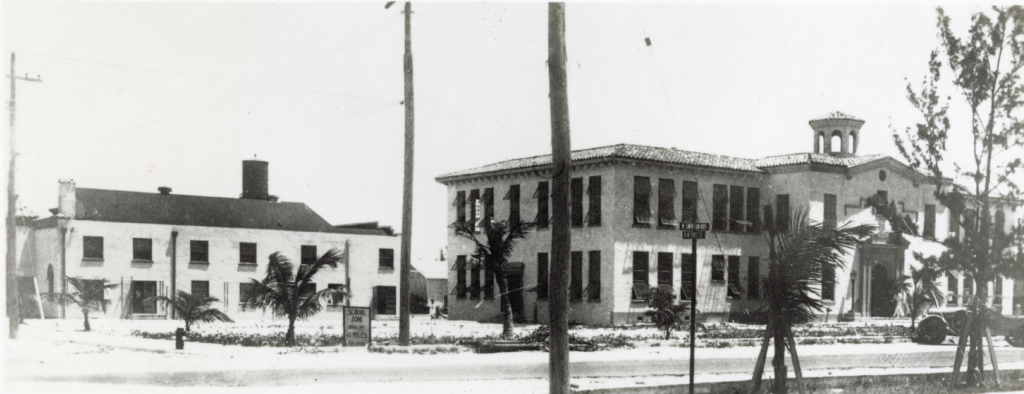
of Spanish, Italian, Moorish and Byzantine influences. Common characteristics included asymmetrical facades, varied roof lines, rough stucco walls, arched door and window openings, with decoration around doors, windows, and cornices. This ornate style was popular in the “Boom period,” 1923-1926, but decreased with the coming of the Great Depression in the 1930s. 1925 was a busy year in Delray with the Chamber of Commerce forming, the Kiwanis Club chartering and the Hotel Casa Del Ray being built on Atlantic Avenue. Four newspapers kept citizens informed.

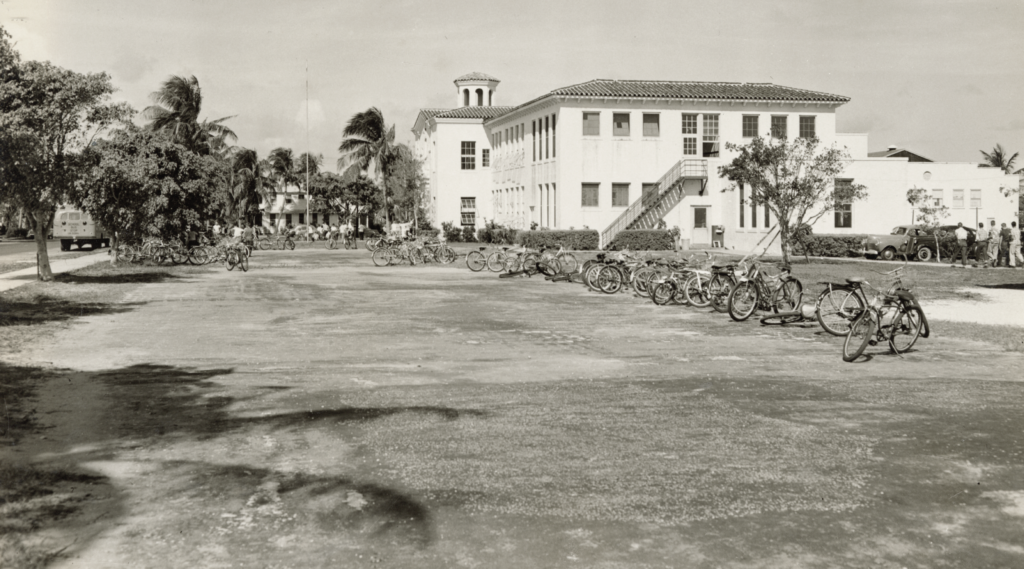
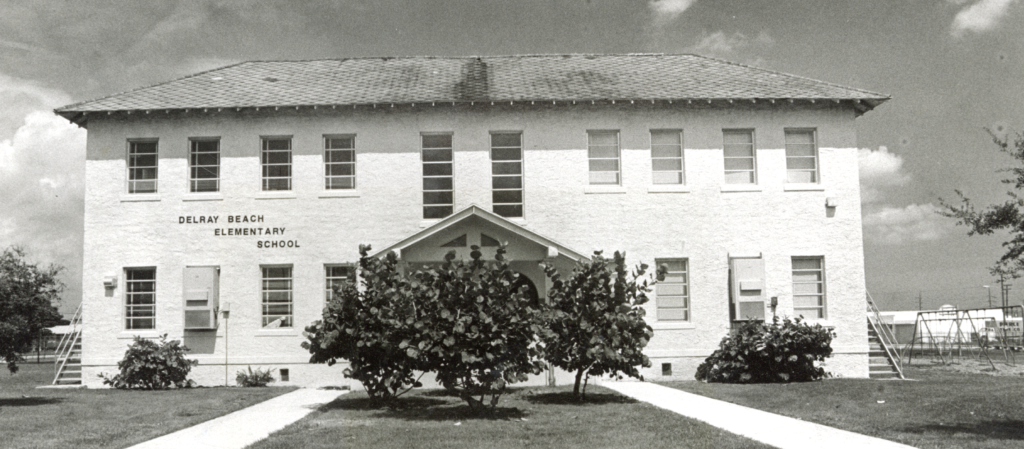
With Frances Bourque at the helm, “Old School Square” Foundation was formed after learning that the Palm Beach County School Board planned to close deteriorating local school sites. The City of Delray Beach purchased the property in 1987, as communities across the nation were demonstrating that surplus school properties could be viably restored or renovated for adaptive reuse covering a broad spectrum of cultural arts uses.
With our school complex abandoned, a feasibility study was pursued for restoration and transition to an arts and cultural center. For ten years, Old School Square, Inc, the City Commission, City staff, Parks & Recreation, Planning and Zoning and countless, passionate volunteers worked together on this vital preservation project, which would jumpstart a revitalization to a struggling downtown.
Dreams were realized. Delray’s renaissance was sparked in the early 1990’s when renovations were completed. Old School Square became the center of our Village by the Sea.

Old School Square was placed on the National Register of Historic Places in 1988. In 1995, Delray Beach wins its first “All American City” award. By the mid 2000’s Old School Square is hosting 1,500 activities per year. In 2001, Spady Cultural Heritage Museum opens. The one-acre Delray Beach Historical
Society campus expands, adding two historic cottages saved from demolition in 2007. The official City Archive is constructed on the campus. Year-round programming commences.
To learn more about Delray Beach history, visit the Delray Beach Historical Society. 3 NE 1st Street, Delray Beach. Contact the Archivist Kayleigh Howald.

